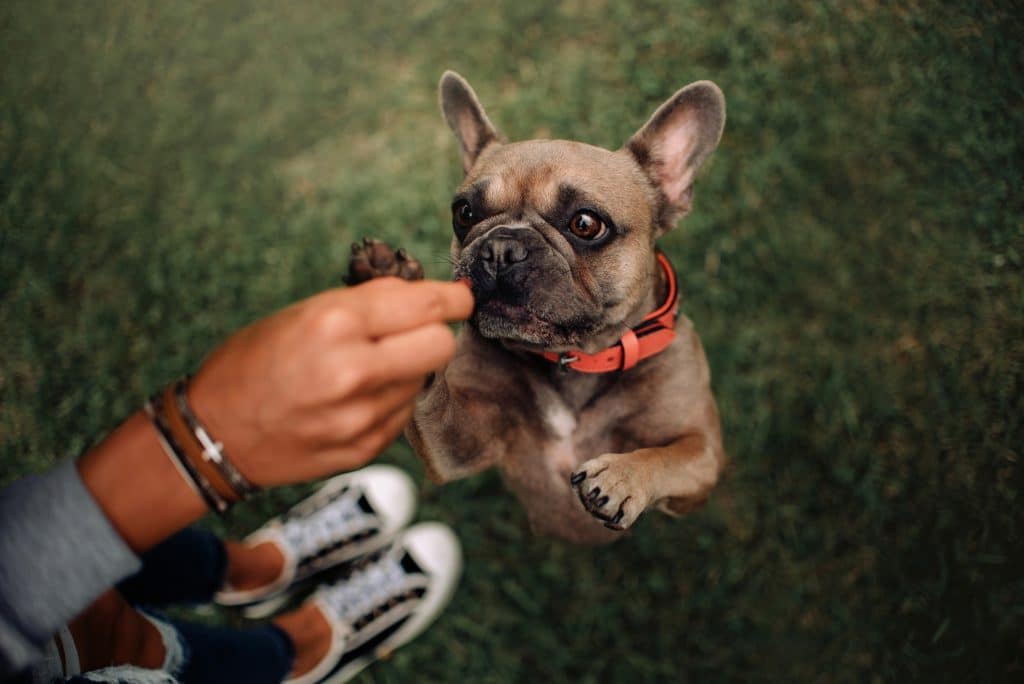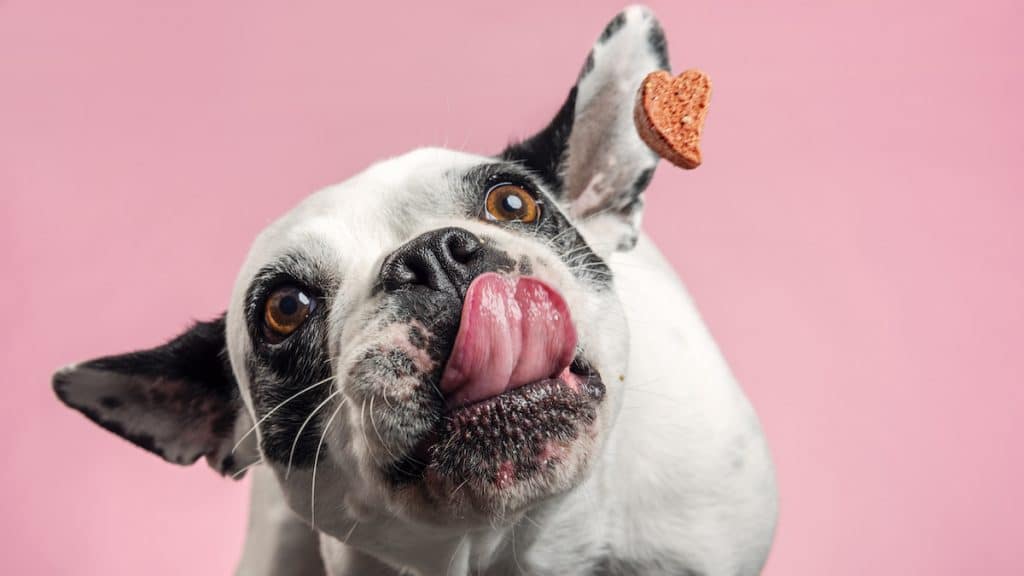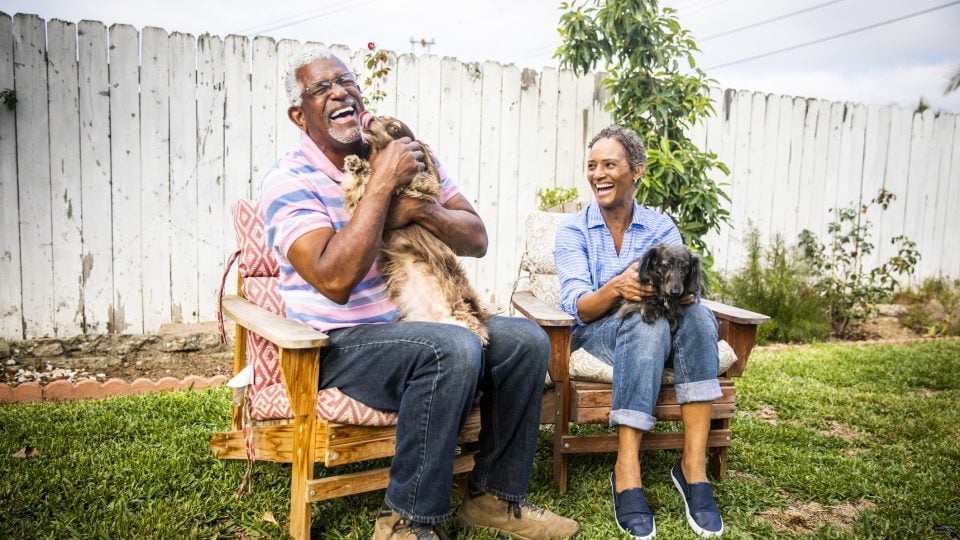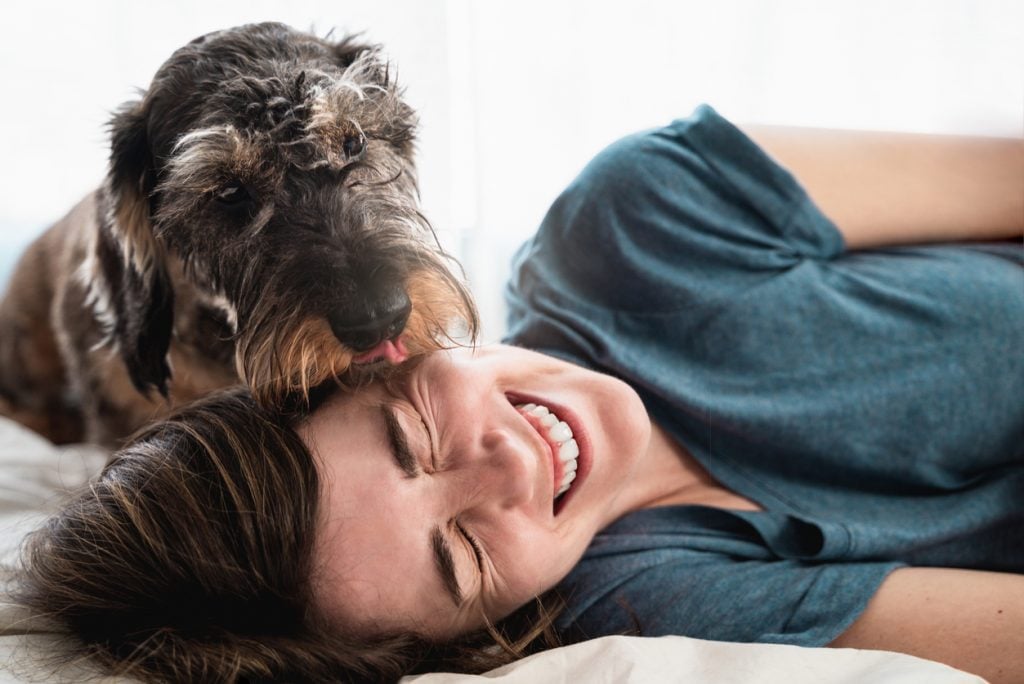Am I my dog’s favourite person? As a pet parent, you’ve probably wondered because, let’s face it, who wouldn’t want to be number one in their dog’s eyes? In short, it’s all about socialisation, attention, positive association, and personality. But let’s get into the nitty-gritty details so you can learn how dogs choose their favourite person, or if you want proof, you’re number one.
You are your dog’s favourite person if your dog wants to be around you, shows signs of love around you, and is interested in the bond they’ve built with you. Sometimes, a dog’s favourite person isn’t always their primary caregiver. Instead, it might even be your dog’s favourite sitter. Of course, every dog is different, but some generalisations apply.
What Builds a Dog’s Adoration for A Person
Socialisation matters
Many dogs bond hardest with whoever cares for them during their key socialisation period, which occurs between birth and six months. At this age, puppies’ brains are incredibly receptive, and their early social experiences influence them for the rest of their lives. That’s why it’s so important to ensure your puppy has positive interactions with a wide range of people, places, and things.
For example, dogs who aren’t exposed to people wearing hats may become afraid of hats later in life. I didn’t get Radar until he was six months old, so I don’t know exactly what his early socialisation experiences were like. However, he tends to prefer men, which leads me to believe he had more positive, formative experiences with male caretakers.
If your dog was already an adult when you adopted them, don’t worry: it’s not too late to become their favourite. While early experiences are important, continued socialisation through experiences like doggy daycare, play dates, and daily walks matters a lot!
Attention (and affection) increases the bond

Ksenia Raykova via iStock
Now, I’ve already disclosed the fact that my own dog prefers someone who isn’t their primary caregiver. But most dogs tend to bond with the person who gives them the most attention. For example, in a family with two parents and two kids, the dog may favour the parent who fills their bowl every morning and takes them for a walk every evening.
In addition, physical affection solidifies the bond between dog and person. If a person is stand-offish towards a dog, the dog will be stand-offish towards them. But if you give your dog plenty of pets, grooming sessions, massages, and love, they’re likely to seek out more.
For some dogs, it’s not just the amount of attention and affection that matters, but the quality. My dog Radar spends most of his time with me, but I can be a bit reserved and strict about allowing 18kg of dog in my lap. My brother, on the other hand, is happy to roughhouse and let Radar crawl all over him. No wonder Radar does backflips (sometimes literally) whenever he sees Jacob.
Positive association is key
Beyond the attention of their favourite people, dogs play favourites depending on their associations. In other words, when a person is the source of good stuff, the dog forms a bond. For example, whenever somebody new comes to my house, I have them meet the dogs in the garden and give them treats. This establishes an immediate positive association (new person = tasty treats) that helps ease the introduction.
Of course, a dog is going to love the person who always plays tug of war or gives them loads of their favourite stinky beef liver treat. They also know that the person who feeds them most often is a pretty important player in their lives!

ClarkandCompany/iStock
On the flip side, dogs often react poorly to people with whom they have bad associations. Negative interactions explain why a dog may avoid someone, even if unintentional. If all your dog gets at the vet are pokes and prods, they’re way less likely to see out a vet’s attention.
Wherever you go, there they are
Is your dog your own personal shadow? Can you not get from Point A to Point B in your home without them following right behind you? Then it’s definitely possible you rank high on your dog’s list of favourite people.
Just like positive attention and association increase the bond between dog and pet parent, following you can reflect similar feelings. If you are the source of walks, treats, food, and petting sessions, why wouldn’t your doggo favour following you above all others?
It’s important to keep in mind that being a ‘velcro dog’ who enjoys your companionship is different from a dog with separation anxiety. Whereas velcro behaviour has positive characteristics, such as licking, playing, etc, separation anxiety isn’t a sign of favouritism and has negative characteristics, such as toilet accidents and depression.
Is Licking a Sign of Trust and Love?
Yes, it’s true: in some instances, dog licking can also be a sign of greeting or affection.
But your dog may also just like the taste or information your hands and face offers. We produce a salty sweat which dogs enjoy, and they’re the parts of our bodies that are exposed to air and touch from the different places we go throughout the day.
Dog licking can also be a sign of submission or act of communication and may also stem from a food-seeking behaviour between mum and pup. If your dog is showing signs of whale eye (whites of their eyes showing) while licking, this actually means the opposite of comfort. Anxious body language coupled with licking signals that your dog is trying to get distance away from you.
Breeds that Bond Strongly with Their Caregiver
Have you ever met a dog that looks and behaves a lot like their person? The saying ‘like attracts like’ applies to dogs and people, too. Dogs often choose a favourite person who matches their own energy level and personality. I’ve certainly found that my more reserved, cautious dog is more closely bonded to me, while my more outgoing, boisterous dog is very attached to my more active brother.
In addition, some dog breeds are more likely to bond with a single person, making it more likely that their favourite person will be their only person. Breeds that tend to bond strongly to one person include:
- Basenji
- Greyhound
- Shiba Inu
- Cairn Terrier
For these breeds, finding the right pet sitter won’t be an overnight search. In fact, you may need to have your chosen pet sitter come stay with your dog for drop-ins so that they develop their own unique bond. This can help alleviate human and dog anxiety when you need to travel without your dog.
Want more on how dog breeds match human personalities? Check out our lists of the smartest dog breeds, the laziest dog breeds, and the best dog breeds for introverts.
How To Become Your Dog’s Favourite
If you have the feeling you’re not your dog’s favourite person, don’t despair. You can improve and increase the bond between you. The easiest (and most fun) way is to spend at least 30 minutes of focused, one-on-one time together each day. This doesn’t include walks, garden time, or watching TV together. Your bonding time should be active and focused.
Here are a few bonding activities to engage in with your dog:
- Play a game of fetch, tug, or frisbee
- Have a training session. Working on new skills, or reinforcing old ones, is a great way to bond!
- Try a sport like agility, dock diving, or take your dog to dog gym or park where you and your dog can work together as a team
- Food (in healthy, appropriate quantities) is love. Enhance that by integrating eye contact during mealtime (but also don’t make it weird).
- Give your dog a grooming session or massage
Bonding occurs naturally between dogs and the people who treat them well. If you’re not your dog’s favourite person now, don’t worry! A dog’s favourite person can change over time. The key? Take good care of your dog, socialise them, create positive experiences, and respect their unique personality. Your dog will reward you with a lifetime of love (even if they sometimes act more excited to see your brother).




